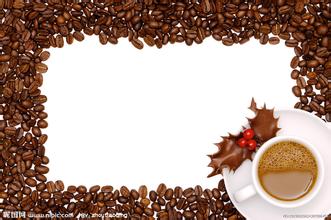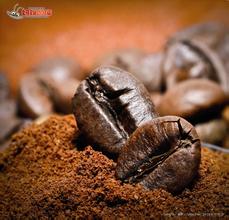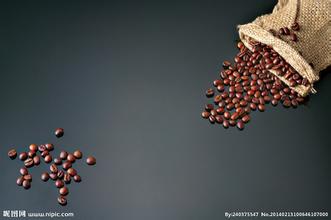How to adjust the thickness of the coarse dial
What do you think of the rough dial of the bean mill? how to adjust the thickness?
The brand of the mill is different, and the thickness of the powder from the same scale identified by each brand is different, which can only be adjusted from your cooking method. At the same cooking temperature, the powder is thicker, the extraction time can be longer, the powder is finer, and the extraction time can be shorter. Basically, regardless of the variety, siphon, hand-made sugar-sized coffee powder is more appropriate, while semi-automatic Italian machines need to be ground to flour-like coffee grinders of different brands. The thickness of the powder milled on the same scale marked by each brand is different and can only be adjusted from your brewing method. At the same cooking temperature, the powder is thicker, the extraction time can be longer, the powder is finer, and the extraction time can be shorter. Basically, regardless of the variety, siphon and hand-made coffee powder the size of sugar is more appropriate, while semi-automatic espresso machines need to be ground to flour-like coffee powder. For example, on the hand, the recommended medium scale is as thick as sugar. If you rush out with obvious astringency or overextraction, it may be finer or slower, so you can try to thicken it, but because there are too many variables, you can only move one variable each time, that is, you adjust the technique, water injection speed, circle times, water column size, powder thickness, temperature and so on. But only one can be changed, if it is more obvious miscellaneous bitterness, you can first consider the powder thickness.
If you try it a few more times, you can feel your own suitable scale. Remember that fine is a sense of over-abstraction, rough is a sense of mediocrity, and everyone's scale will not be the same.
Turn on the grinder for 10 seconds and discard the coffee powder (these are coffee powders that have not been adjusted).
Use the coffee powder to make a cup of coffee to ensure the accuracy of the steps of serving, flattening and pressing powder. Test the quality of the coffee and the extraction time. Constantly adjust the dial to make the powder reach a perfect thickness.
Debugging of electronic bean grinder
Different bean grinders have different adjustment dials, so you should check the model of the coffee grinder and read the instructions carefully to determine the direction and strength of the dial. In general, if you keep in the habit of checking the settings of the bean grinder, you only need to make very small adjustments. As long as you move the turntable within 3 mm, you can change the thickness of the powder. Although 3 mm is a very small number, the grinding time of the same coffee beans will change for 3-5 seconds to observe the coffee powder. High-quality coffee powder should be powdery and gravel. If the coffee powder is soft, like flour, it means the powder is fine. On the contrary, if the coffee powder feels tough and rough, it means the powder is too coarse. When the coffee bean enters the grinder, the blade in the grinder will crush the coffee bean into powder. The smaller the distance between the blade and the blade, the smaller the coffee beans will be ground into smaller particles. The finer the grinding particles, the tighter and tighter the water.

Important Notice :
前街咖啡 FrontStreet Coffee has moved to new addredd:
FrontStreet Coffee Address: 315,Donghua East Road,GuangZhou
Tel:020 38364473
- Prev

Introduction to the tutorial on the use of grinding bean thickness of Delong coffee machine
Delong coffee machine grinding bean thickness use tutorial introduction selection function: to be fully automatic, can automatically hit milk foam and so on is indifferent to me, I usually only drink pure coffee, so whether there is automatic milk foam is not a problem. The principle of selection is very simple, the first is to sort by discount, and then take into account the total price (the high price is always better), and the discounted price. Rank number one
- Next

Introduction of video instructions for cleaning water filter of Merlot coffee machine
Merlot coffee machine cleaning filter video instructions introduce vinegar cleaning to achieve satisfactory results should be washed with pure water and then continue to rinse until the water does not have any smell. Add 2 cups of water to the water tank, then add 50ml vinegar, then drip one cup according to the coffee-making procedure, let it stand for 20 minutes, then start to clean all the water in the water tank, and turn it off for 5 minutes.
Related
- What is the Philharmonic pressure? How to use Philharmonic pressure to make delicious coffee
- Why does a hand grinder have more fine powder than an electric grinder?
- In addition to the hot mom, what is the difference between the versions of EK43 | ditting and Mahdi ek43?
- What kind of equipment do you need to make coffee by hand? Introduction to novice starter cooking equipment tools
- Espresso needs to be ground how thick and thin scale entry Italian Coffee Machine Bean Grinder investigation and Grinding course
- How much does it cost to open a small private cafe? How much does it cost to learn coffee? How to operate it?
- The difference between the flavor characteristics of hand-brewed coffee and coffee maker is hand-brewed coffee really better than coffee maker? Can I use a coffee machine to make coffee beans by hand?
- The difference between 01 and 02 of hario v60 filter cup what is the difference between 01 and 02 filter cup opening and cooking flavor
- What's the difference between the smart cup and the French kettle? Which is better, the French kettle or the Smart Cup?
- What's the difference between a smart cup and a V60 filter cup? The difference between the taste of smart cup and hand-brewed coffee

